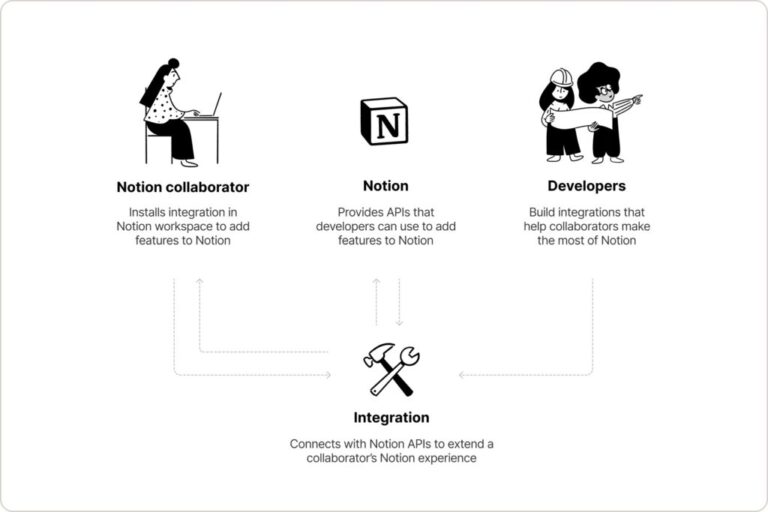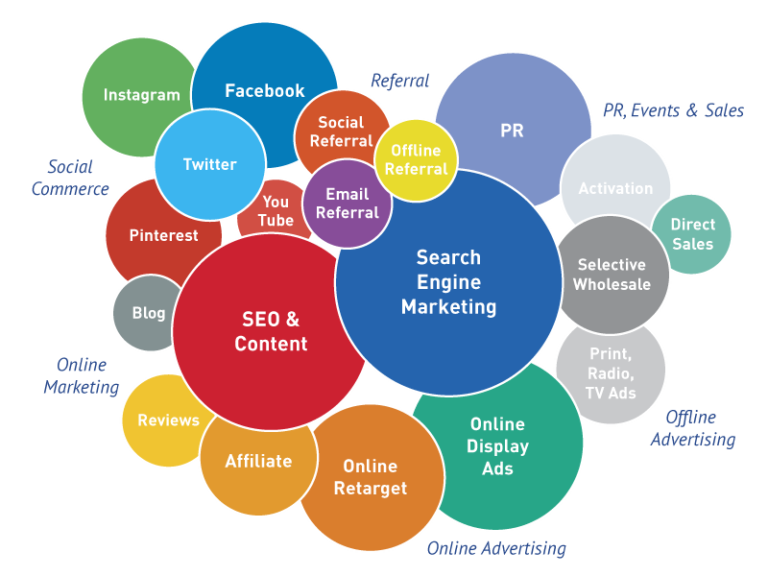Mastering Google Ads involves understanding its platform, optimizing keywords and bids, creating compelling ad copy and monitoring performance regularly. In order to achieve mastery in Google Ads, it is crucial to have a clear understanding of the platform’s features, target audience, and campaign objectives, while continuously analyzing and optimizing ad campaigns for better results.
Maintaining a strong focus on regular monitoring, testing, and refining various aspects of the campaign will lead to effective and successful advertising on Google Ads. By following these steps, advertisers can maximize their potential to reach and engage with their target audience, ultimately driving conversions and achieving their marketing goals.
Understanding The Basics Of Google Ads
When it comes to online advertising, Google Ads is undoubtedly one of the most powerful tools available. Understanding the basics of Google Ads is crucial for any marketer or business owner looking to master this advertising platform and maximize their online reach.
What Is Google Ads?
Google Ads, formerly known as Google AdWords, is an online advertising platform created by Google. It allows businesses to display their ads on Google’s search engine results pages (SERPs), as well as on various websites that are part of Google’s Ad Network. With Google Ads, businesses can reach their target audience effectively and drive relevant traffic to their websites.
Benefits Of Using Google Ads
Google Ads offers several benefits to advertisers, making it an essential tool for any online advertising strategy:
- High visibility: Google Ads places your ads in front of potential customers when they are actively searching for products or services related to your business.
- Targeted reach: With extensive targeting options, you can narrow down your audience based on factors like location, demographics, interests, and more, ensuring you reach the right people.
- Cost-effective: Google Ads operates on a pay-per-click (PPC) model, meaning you only pay when someone clicks on your ad. This allows you to set a budget that suits your business’s needs and only pay for actual results.
- Measurable results: Google Ads provides detailed analytics and reporting, allowing you to track and measure the performance of your ads. This data helps you to optimize your campaigns and make informed decisions to achieve better results.
How Google Ads Works
Google Ads operates on an auction-based system. When a user searches on Google, Google determines which ads to show based on factors such as ad relevance, quality score, and bid amount. Here’s a simplified overview of how it works:
- Keyword targeting: Advertisers identify relevant keywords that they want to trigger their ads. When a user searches for those keywords, Google determines whether to display the ads based on factors like ad relevance and quality score.
- Bid amount: Advertisers set a maximum bid amount they are willing to pay for a click on their ad. This bid amount, combined with the ad’s quality score, determines the ad’s position on the search results page.
- Ad auction: When a user’s search query triggers potential ads, an ad auction takes place. Google considers the bid amounts and quality scores of the competing ads to determine the ad rank and the placement on the search results page.
- Ad rank and placement: Ads with higher ad ranks are placed in more prominent positions on the search results page. The ad rank is calculated based on the bid amount, ad quality score, and other factors.
- User engagement: If a user clicks on an ad, the advertiser is charged a cost-per-click (CPC) fee. The advertiser’s website or landing page then plays a crucial role in generating engagement and conversions.
Setting Up A Google Ads Account
Before you can start advertising on Google Ads, you need to set up an account. Follow these steps to get started:
- Sign up: Visit the Google Ads website and click on “Start Now.” You’ll need a Google account to proceed, so create one if you don’t have it already.
- Create a campaign: Once you’re signed in, you’ll be prompted to create your first campaign. Choose the campaign type that aligns with your advertising goals.
- Set your budget: Determine your daily or monthly budget for your campaign. This allows you to control how much you want to spend on advertising.
- Select targeting options: Define your target audience by selecting their locations, demographics, interests, and other relevant factors.
- Create ad groups: Organize your ads into specific ad groups based on keywords, themes, or other relevant criteria. This enhances relevancy and allows for better performance tracking.
- Create ads: Develop compelling and relevant ads that will capture your audience’s attention and entice them to click.
- Set up tracking: Implement tracking codes on your website to measure the effectiveness of your ads and track conversions.
- Review and launch: Review your campaign settings, ensure everything is accurate, and launch your Google Ads campaign to begin reaching your target audience.
By understanding the basics of Google Ads, such as what it is, the benefits it offers, how it works, and the process of setting up an account, you’re equipping yourself with the necessary knowledge to master this powerful advertising platform. So get started, and unlock the potential of Google Ads for your business!
Conducting Keyword Research For Google Ads
In the world of digital advertising, mastering Google Ads is crucial for driving targeted traffic to your website and increasing conversions. And at the heart of a successful Google Ads campaign lies effective keyword research. By understanding the importance of keyword research and utilizing the right tools to identify high-converting keywords, analyze competition and search volume, and distinguish between long-tail and short-tail keywords, you can create PPC campaigns that resonate with your target audience and yield impressive results.
Importance Of Keyword Research
Keyword research forms the foundation of any Google Ads campaign. It involves identifying the specific search terms and phrases your potential customers are using when they look for products or services like yours. By conducting thorough keyword research, you gain valuable insights into the language and phrases your target audience uses, allowing you to tailor your ad copy and landing pages accordingly.
Tools For Keyword Research
Thankfully, there are various tools available to aid in your keyword research journey. These tools provide data on search volume, competition, and keyword suggestions, saving you time and helping you make informed decisions for your campaigns. Some popular keyword research tools include:
| Tool | Features |
|---|---|
| Google Keyword Planner | – Provides search volume and keyword ideas – Offers keyword performance forecasts |
| SEMrush | – Offers competitor analysis – Provides data on search volume and keyword difficulty |
| Ahrefs | – Generates keyword ideas with search volume and keyword difficulty – Offers competitor analysis and content gap analysis |
Identifying High-converting Keywords
When it comes to selecting keywords for your Google Ads campaign, it’s crucial to focus on high-converting keywords – the ones that have a high likelihood of driving clicks and conversions. Here are a few strategies to help identify these high-converting keywords:
- Study your website and understand the products or services you offer. Pay attention to specific features, benefits, and unique selling points that set you apart from competitors.
- Research your target audience and identify their pain points, desires, and intentions when searching for products or services in your industry.
- Use keyword research tools to analyze search volume, competition, and relevance for potential keywords.
- Look for long-tail keywords, which are longer and more specific search phrases that often have lower competition and higher conversion rates.
- Consider incorporating commercial intent keywords that indicate a readiness to make a purchase, such as “buy,” “discount,” or “deals.”
Analyzing Competition And Search Volume
Understanding the competition level and search volume for your chosen keywords is vital for optimizing your Google Ads campaign. High competition means more advertisers are bidding for those keywords, making it more challenging and expensive to rank higher in search results. On the other hand, low competition keywords can provide valuable opportunities to target a specific niche audience. Similarly, analyzing search volume helps gauge the popularity of a keyword and its potential to attract a substantial number of clicks and conversions.
Long-tail Vs. Short-tail Keywords
In addition to competition and search volume analysis, distinguishing between long-tail and short-tail keywords is essential for a well-rounded keyword strategy. Short-tail keywords consist of one or two words and are often more generic. They tend to have higher search volume but are also highly competitive. On the other hand, long-tail keywords are longer, more specific phrases that narrow down search intent. While they may have lower search volume, they often exhibit higher conversion rates due to their specificity.
By combining short-tail and long-tail keywords in your Google Ads campaign, you can strike a balance between visibility and relevance, reaching a wider audience while still attracting qualified leads.
Crafting Compelling Ad Copy
In the highly competitive world of online advertising, crafting compelling ad copy is critical to ensure your Google Ads campaign stands out from the crowd. Your ad copy is the first point of contact with potential customers and plays a crucial role in generating clicks and conversions. In this section, we will explore various strategies and best practices for crafting attention-grabbing headlines, creating persuasive ad descriptions, utilizing ad extensions effectively, A/B testing ad variations, and incorporating relevant keywords in your ad copy.
Writing Attention-grabbing Headlines
When it comes to creating compelling ad copy, your headline is the first element that captures the attention of users. A strong headline should be concise, impactful, and relevant to the search query. To make your headlines more attention-grabbing:
- Use power words or action verbs that evoke emotions and create a sense of urgency or curiosity.
- Include numeric figures or percentages to highlight specific benefits or offers.
- Personalize the ad by addressing the user directly or including targeted keywords.
Creating Persuasive Ad Descriptions
Your ad description is an opportunity to extend your message, showcase unique selling points, and convince users to click on your ad. To create persuasive ad descriptions:
- Focus on the benefits or solutions your product/service offers to the users.
- Highlight any special offers, promotions, or discounts to grab attention.
- Include a strong call-to-action that tells users what action to take, such as “Shop Now,” “Learn More,” or “Get a Free Quote.”
- Keep your descriptions concise and easy to read, using bullet points or short sentences for better readability.
Utilizing Ad Extensions Effectively
Ad extensions provide additional information and enhance the visibility of your ads. They can include links to specific pages, phone numbers, locations, or even additional text. Utilize ad extensions effectively to:
- Provide more relevant information to users, increasing the chances of engagement.
- Increase your ad’s real estate on the search results page, leading to higher visibility.
- Utilize extensions like call extensions or site link extensions to enhance the overall experience for users.
A/b Testing Ad Variations
Continuous testing and optimization of your ad variations is crucial to improve their performance. A/B testing allows you to compare different elements and formats to determine which ones drive higher click-through rates and conversions. To effectively A/B test your ad variations:
- Test different headlines, descriptions, and call-to-action phrases to identify the most compelling combinations.
- Monitor the performance metrics closely and make data-driven decisions based on the results.
- Make incremental changes to your ads, test them against the current variants, and refine your copy over time.
Incorporating Keywords In The Ad Copy
Keywords play a significant role in optimizing your ad copy for relevant searches. By incorporating them strategically, you can improve ad relevance and attract the right audience. When incorporating keywords into your ad copy:
- Include relevant keywords in your headline and description while maintaining natural language.
- Ensure that the keywords used align with the search intent and match the content of your landing page.
- Avoid keyword stuffing, which can negatively impact the user experience and Quality Score.
By implementing these techniques and constantly testing and refining your ad copy, you can master Google Ads and make your campaigns truly successful. Remember, crafting compelling ad copy is an ongoing process that requires experimentation, analysis, and continuous optimization.
Optimizing Landing Pages For Better Conversion Rates
When it comes to running successful Google Ads campaigns, optimizing landing pages is key to improving conversion rates. A well-optimized landing page can make all the difference in turning visitors into customers. In this section, we will explore the importance of optimized landing pages and provide actionable tips to help you create landing pages that drive results.
Importance Of Optimized Landing Pages
An optimized landing page plays a crucial role in the success of your Google Ads campaigns. It is the page where users land after clicking on your ad, and it should be designed to match the ad’s intent and provide relevant information to the user. By optimizing your landing pages, you can:
- Increase conversion rates: A well-optimized landing page can significantly improve the likelihood of visitors taking the desired action, whether it’s making a purchase, filling out a form, or signing up for a newsletter.
- Lower bounce rates: When visitors land on a page that aligns with their expectations and offers valuable content, they are more likely to stay on your website, reducing bounce rates.
- Improve Quality Score: Google Ads takes into account the relevancy and user experience of your landing page when calculating your Quality Score. By optimizing your landing pages, you can increase your Quality Score, resulting in better ad rankings and lower costs.
Designing User-friendly And Visually Appealing Landing Pages
The design of your landing page plays a crucial role in providing a positive user experience and encouraging conversions. Here are some best practices to consider when designing your landing pages:
- Keep it clean and clutter-free: A cluttered landing page can distract users and make it hard for them to focus on the essential elements. Use whitespace effectively to create a clean and organized layout.
- Use compelling visuals: Incorporate high-quality images and videos that are relevant to your product or service. Visuals can communicate your message effectively and capture the attention of your visitors.
- Ensure mobile responsiveness: With the majority of internet users accessing websites through mobile devices, it is crucial to optimize your landing pages for mobile responsiveness. This ensures a seamless experience for all users.
Crafting A Clear Call-to-action
A clear and compelling call-to-action (CTA) is essential for guiding visitors towards the desired action. Here are some tips to craft effective CTAs:
- Use action-oriented language: Use strong verbs that prompt users to take action, such as “Buy Now,” “Sign Up,” or “Request a Quote.”
- Create urgency: Encourage immediate action by using phrases like “Limited Time Offer” or “Only X Spots Left.”
- Make it prominent: Ensure your CTA stands out visually and is easily visible on the page. Consider using contrasting colors or whitespace to draw attention to it.
Testing And Measuring Landing Page Performance
Testing and measuring the performance of your landing pages is crucial for continuous improvement. A/B testing can help you identify what works best for your audience. Here are some elements to test:
| Elements to Test | Examples |
|---|---|
| Headlines | Variations of wording, length, or tone |
| CTA buttons | Colors, size, placement, or text |
| Form fields | Number of fields, required vs. optional |
| Visuals | Images, videos, or graphics |
By testing different variations and measuring their impact on conversion rates, you can identify the most effective elements and refine your landing pages accordingly.
Implementing Landing Page Optimization Best Practices
Implementing landing page optimization best practices can further enhance the performance of your landing pages. Here are some key strategies:
- Ensure fast page load times: Users expect websites to load quickly, and a slow-loading landing page can lead to high bounce rates. Optimize your page for speed by compressing images, minifying CSS and JavaScript, and leveraging caching.
- Keep the content concise and persuasive: Capture visitors’ attention with compelling copy that clearly communicates your value proposition and benefits. Use bullet points or short paragraphs to present information in a scannable format.
- Provide social proof: Including testimonials, reviews, or trust badges can help build trust with your audience and increase the credibility of your offer.
- Optimize forms: If your landing page includes a form, keep it simple and only ask for essential information. Use autofill where possible to streamline the process.
By implementing these best practices, you can maximize the impact of your landing pages and drive better conversion rates.
Monitoring And Analyzing Google Ads Performance
Effective monitoring and analysis of your Google Ads performance is crucial for achieving optimal results and maximizing your return on investment (ROI). By tracking key metrics and utilizing Google Ads reporting and analysis tools, you can make data-driven decisions and continuously optimize your campaigns for better performance. In this section, we’ll explore the essential steps to master the art of monitoring and analyzing your Google Ads performance.
Tracking Key Metrics And Kpis
Tracking key metrics and Key Performance Indicators (KPIs) enables you to measure the effectiveness of your Google Ads campaigns. It provides valuable insights into how your ads are performing, allowing you to identify areas for improvement. When monitoring your Google Ads performance, it’s important to focus on relevant metrics such as click-through rate (CTR), conversion rate, average cost per click (CPC), and return on ad spend (ROAS).
By regularly monitoring these metrics, you can assess the overall performance of your campaigns, identify underperforming ads or keywords, and make data-driven decisions to optimize your strategies.
Google Ads Reporting And Analysis Tools
To gain a deeper understanding of your Google Ads performance, Google provides a comprehensive suite of reporting and analysis tools. These tools offer in-depth insights into various aspects of your campaign, allowing you to analyze data and identify trends.
Google Ads’ reporting tools enable you to generate custom reports tailored to your specific needs. Whether you want to examine the performance of specific ad groups, view audience demographics, or measure the impact of different bidding strategies, these tools can provide valuable data insights.
In addition, tools like Google Analytics can help you bridge the gap between your Google Ads and website data, providing a holistic view of your customers’ behavior and conversion metrics.
Making Data-driven Decisions
Monitoring and analyzing your Google Ads performance is not enough on its own; you need to take action based on the insights you gather. By making data-driven decisions, you can proactively optimize your campaigns and improve their overall performance.
Using the relevant data from your tracking and reporting tools, you can make informed choices about adjusting your ad targeting, modifying your ad copy, or reallocating your ad budget. Data-driven decisions ensure that your campaigns are continuously optimized for maximum effectiveness and ROI.
Optimizing Campaigns Based On Performance Insights
Regularly monitoring and analyzing your Google Ads performance allows you to identify areas of improvement and make data-driven optimizations. Based on the insights you gather, you can refine your targeting, ad messaging, keyword selection, and bidding strategies.
For example, if you find that a particular ad group is consistently underperforming, you can revise the ad copy, adjust the targeting parameters, or experiment with different bidding strategies to enhance its performance. This continuous optimization based on performance insights will help you improve your Google Ads campaigns over time.
Continuous Monitoring And Adjustments For Better Results
Monitoring and analyzing your Google Ads performance is an ongoing process. It’s important to continuously monitor key metrics and make necessary adjustments to ensure your campaigns are generating the desired results.
This means regularly reviewing your data, identifying trends, and adapting your strategies accordingly. By keeping a close eye on your campaigns, you can make timely adjustments such as pausing underperforming ads, increasing budget for high-performing keywords, or experimenting with new ad formats or targeting options.
By continuously monitoring and making adjustments based on your performance insights, you can achieve better results and maximize the potential of your Google Ads campaigns.

Credit: www.udemy.com
Frequently Asked Questions On How To Master Google Ads
How Long Does It Take To Master Google Ads?
It takes time to master Google Ads, as it depends on the individual’s learning pace and experience. However, with consistent practice and dedication, one can become proficient within a few months to a year. Practice, experimentation, and staying updated with the latest trends and strategies are key to mastering Google Ads.
How Can I Learn Google Ads Easily?
To learn Google Ads easily, follow these steps: 1. Start by signing up for a Google Ads account. 2. Utilize the Google Ads Help Center as a valuable resource for learning. 3. Watch tutorials and video guides available online. 4.
Join forums and communities to gain insights from experts. 5. Practice running campaigns and analyze data to improve your skills.
Are Google Ads Hard To Learn?
Google Ads is not hard to learn. With proper guidance and resources, you can quickly grasp the fundamentals and start running effective ad campaigns. It’s important to stay updated with the latest features and strategies to maximize your results. Continuous learning and practice are key to success in Google Ads.
How Do I Learn Google Ads Specialist?
To become a Google Ads specialist, start by learning the basics of the platform and its features. Take online courses or study relevant resources. Practice creating and managing campaigns, and stay updated with the latest industry trends. With dedication and hands-on experience, you can develop the skills needed to excel in this field.
Conclusion
Mastering Google Ads requires a strategic approach that combines keyword research, compelling ad copy, and continuous monitoring and optimization. By effectively targeting your audience, refining your messaging, and leveraging data-driven insights, you can maximize your advertising budget and drive better results.
Remember, stay updated with the latest Google Ads trends and best practices to stay ahead of the competition. Start implementing these strategies today to elevate your online advertising game.






